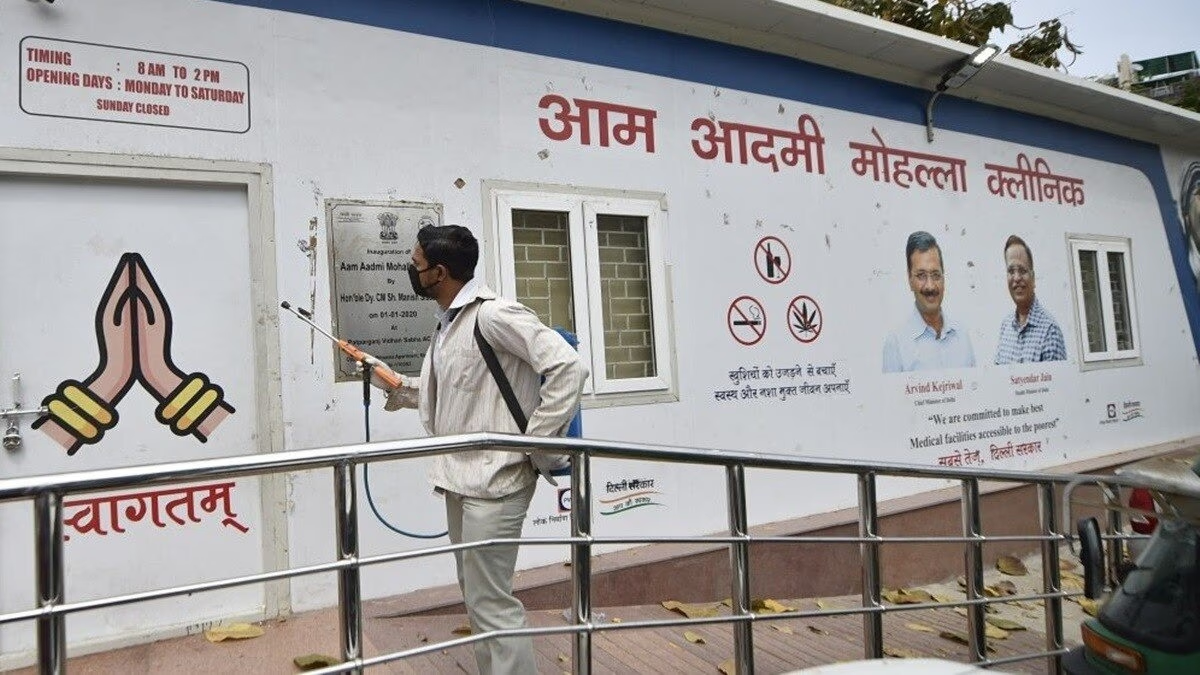The Comptroller and Auditor General (CAG) report, presented in the Delhi Assembly, unveils the challenges in the capital's healthcare system. It reveals that a significant portion of the funds from the central government to tackle the COVID-19 crisis remained unspent, straining the healthcare infrastructure in Delhi.
According to the report, only 5.8284 billion INR out of the 7.8791 billion INR allocated by the central government to combat COVID were utilized. Approximately 2.05 billion INR sat idle, while hospitals faced severe shortages of beds, ventilators, medicines, and medical supplies during the pandemic.
The report further discloses that out of 520 million INR earmarked for hiring and paying healthcare workers, 305.2 million INR was unused, highlighting inadequate recruitment by the Delhi government. This inadequacy faced patients with significant challenges during the pandemic. Similarly, out of 1.1985 billion INR for medicines, PPE kits, and other medical supplies, 831.4 million INR remained unutilized.
The Delhi government had promised to add 32,000 new beds between 2016-17 and 2020-21, yet only 1,357 were added, just 4.24% of the target. The situation was so dire that bed occupancy in several hospitals soared to 101-189%, forcing patients to share beds or receive treatment on the floor.
The CAG report also highlights delays and increased costs in building three new hospitals initiated by previous administrations. These projects faced delays ranging from 5 to 6 years and significant cost escalations.
Indira Gandhi Hospital: 5-year delay, increased cost by 3.149 billion INR.
Burari Hospital: 6-year delay, increased cost by 412.6 million INR.
M.A. Dental Hospital (Phase-2): 3-year delay, increased cost by 263.6 million INR.
There are 8,194 vacant positions in Delhi's government hospitals and health departments. Nursing staff faces a 21% shortfall, and paramedical staff face a 38% shortage. Major hospitals like Rajiv Gandhi Super Speciality Hospital and Janakpuri Super Speciality Hospital reported a 50-74% shortage of doctors, with nursing shortages between 73-96%.
Patients faced intolerably long waiting times for major surgeries:
Lok Nayak Hospital had 2-3 month waits for major surgeries and 6-8 months for burn and plastic surgeries.
Chacha Nehru Bal Chikitsalaya (CNBC) had up to a 12-month wait for pediatric surgeries.
Essential machines like X-rays, CT scans, and ultrasounds at CNBC, RGSSH, and JSSH were inoperative.
14 out of 27 hospitals lacked ICU services.
16 hospitals did not have blood bank facilities.
8 hospitals lacked oxygen supplies.
12 hospitals were without ambulance services.
CATS ambulances were operated without essential equipment.
The report highlights numerous shortcomings in Mohalla Clinics:
21 clinics lacked toilets.
15 clinics had no backup power.
6 clinics provided no tables for doctors.
12 clinics lacked facilities for persons with disabilities.
The CAG report starkly reveals that the Delhi government failed to effectively utilize the funds provided during the COVID crisis. It outlines the dire state of health facilities, staff shortages, and equipment availability while also hinting at potential corruption. The pressing question remains: How will the government justify these lapses that gamble with public health?




